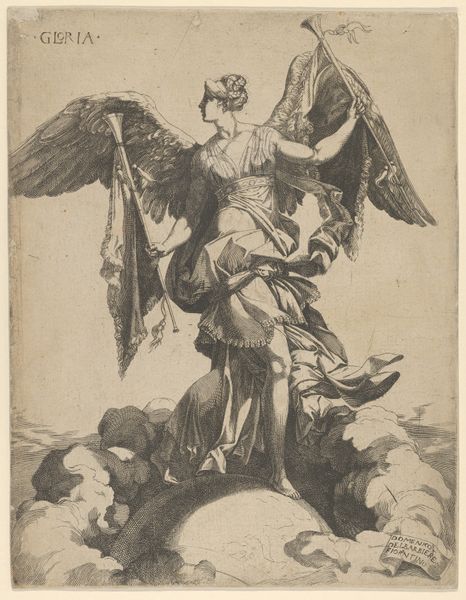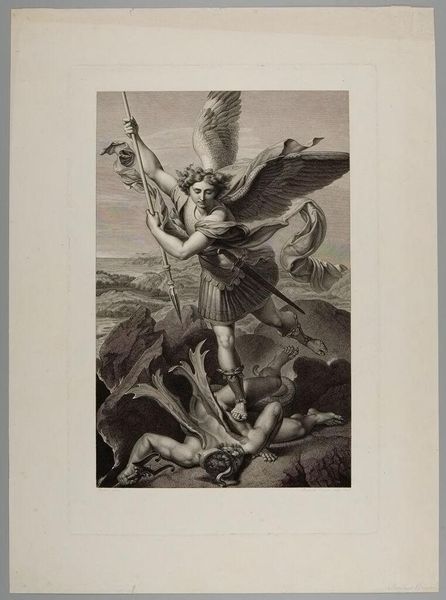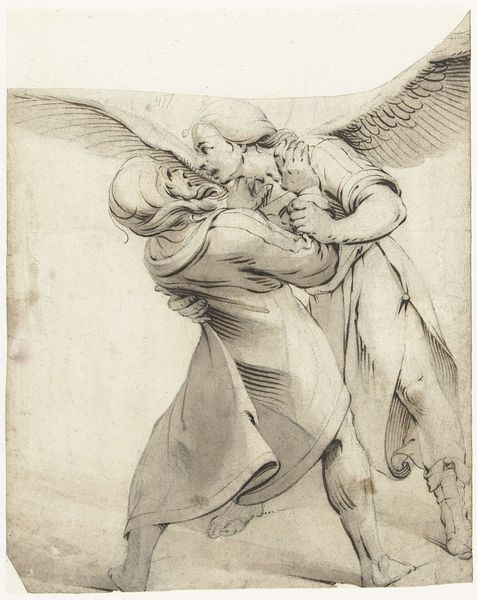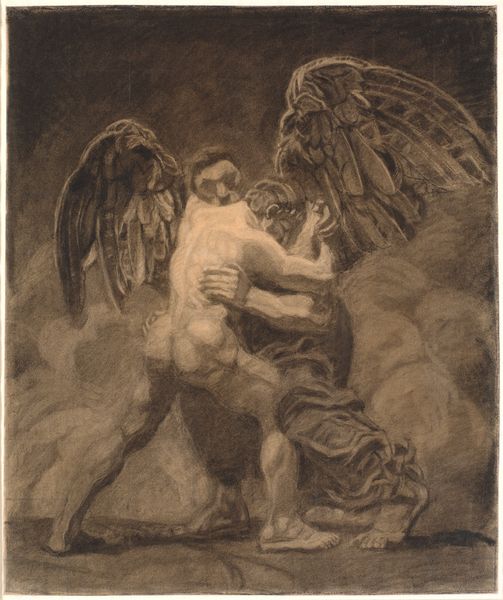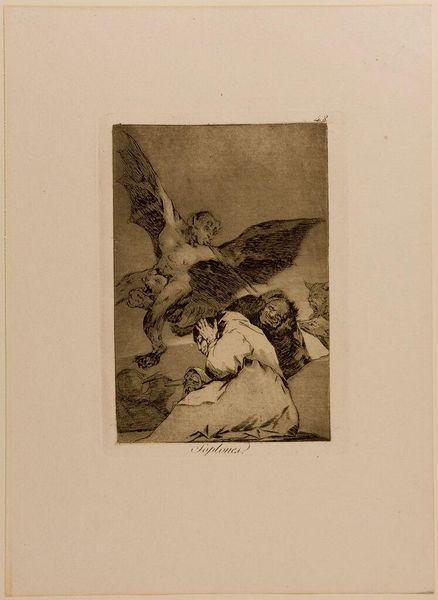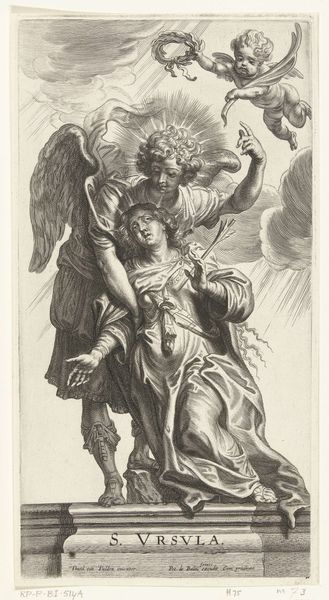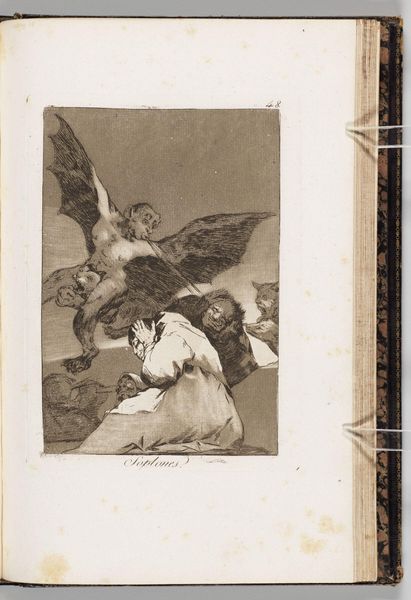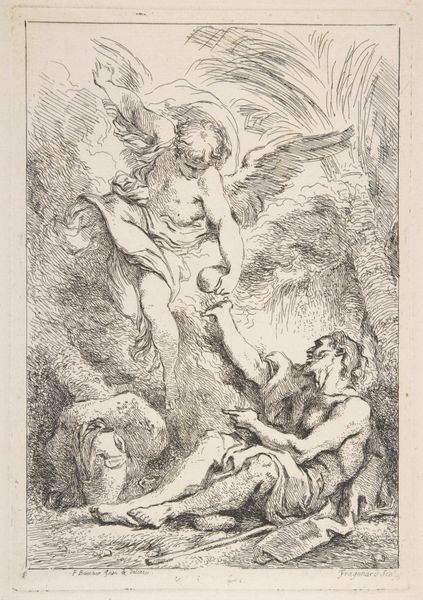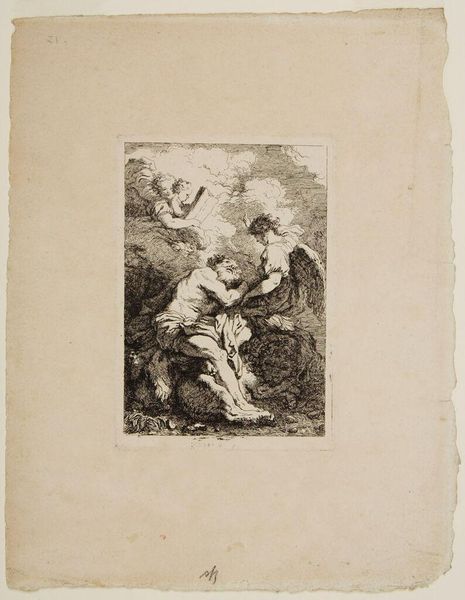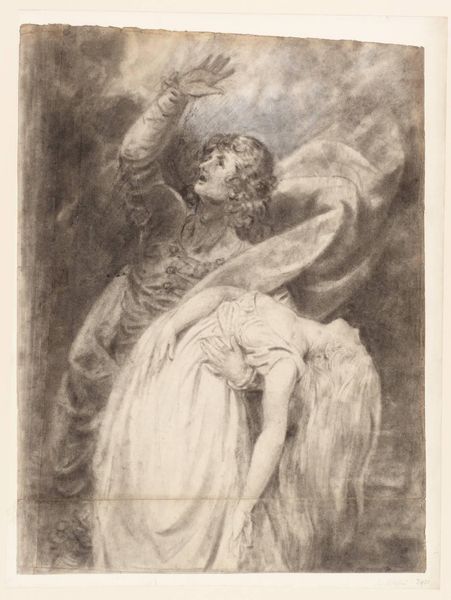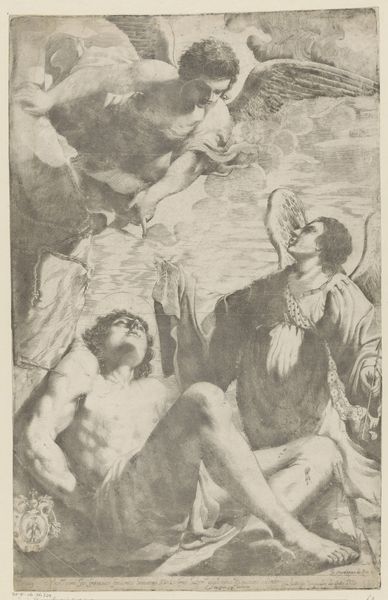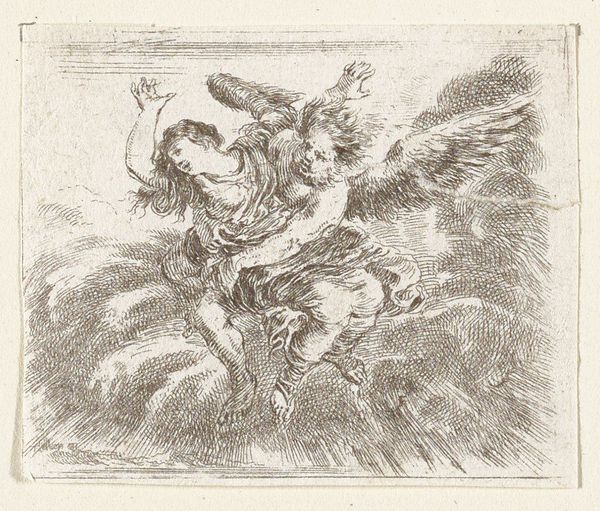
print, etching
narrative-art
etching
figuration
romanticism
grotesque
Copyright: Public Domain: Artvee
Curator: This is "Soplones.", an etching by Francisco de Goya, created between 1796 and 1797. Editor: It's… oppressive. The darkness presses down, and those figures leer out from the gloom. Curator: Goya primarily worked with etching for this series. Think about the labor involved in creating such sharp contrasts using metal plates, acid, and the press itself. The printmaking process was much more complicated than simple sketching. Editor: And look at how Goya uses this medium to critique power. The bat-winged figure could represent a political elite manipulating those below with their "hot air." It is very grotesque, which is heightened by the expressions of anguish, like a cry of the voiceless. Curator: Certainly, there's that reading, but don’t we need to also consider Goya’s position within the royal court? His social standing afforded him a degree of distance. The materials would have been available and the space to execute this. How does privilege impact the final product, its intended audience, its life? Editor: Indeed, but consider that Goya himself experienced bouts of illness that left him deaf around this time. Perhaps these prints were an outlet for anxieties tied to his sensory isolation, a metaphor of manipulation reflecting social upheaval, and of course his declining health, leading to a distorted perspective? The narrative suggests exploitation and the vulnerability of those targeted, all rendered through that stark visual language. Curator: It’s a very compelling reading, but what also grabs me are the subtleties of the etching itself, the density of lines, the aquatint washes that creates such intense contrasts. These choices weren't merely aesthetic. There's a calculated precision in communicating this unease; its artifice that has lasting consequences on its narrative of oppression and privilege that you raise. Editor: Ultimately, Goya encourages a critical eye, an analysis of those structures, through potent imagery and this adds layers to Goya’s legacy as not merely a royal painter, but also a social commentator. Curator: Indeed. And whether one sees it as personal expression, social commentary, or simply a masterclass in printmaking, its enduring impact highlights art's potential for multifaceted interpretations.
Comments
No comments
Be the first to comment and join the conversation on the ultimate creative platform.

